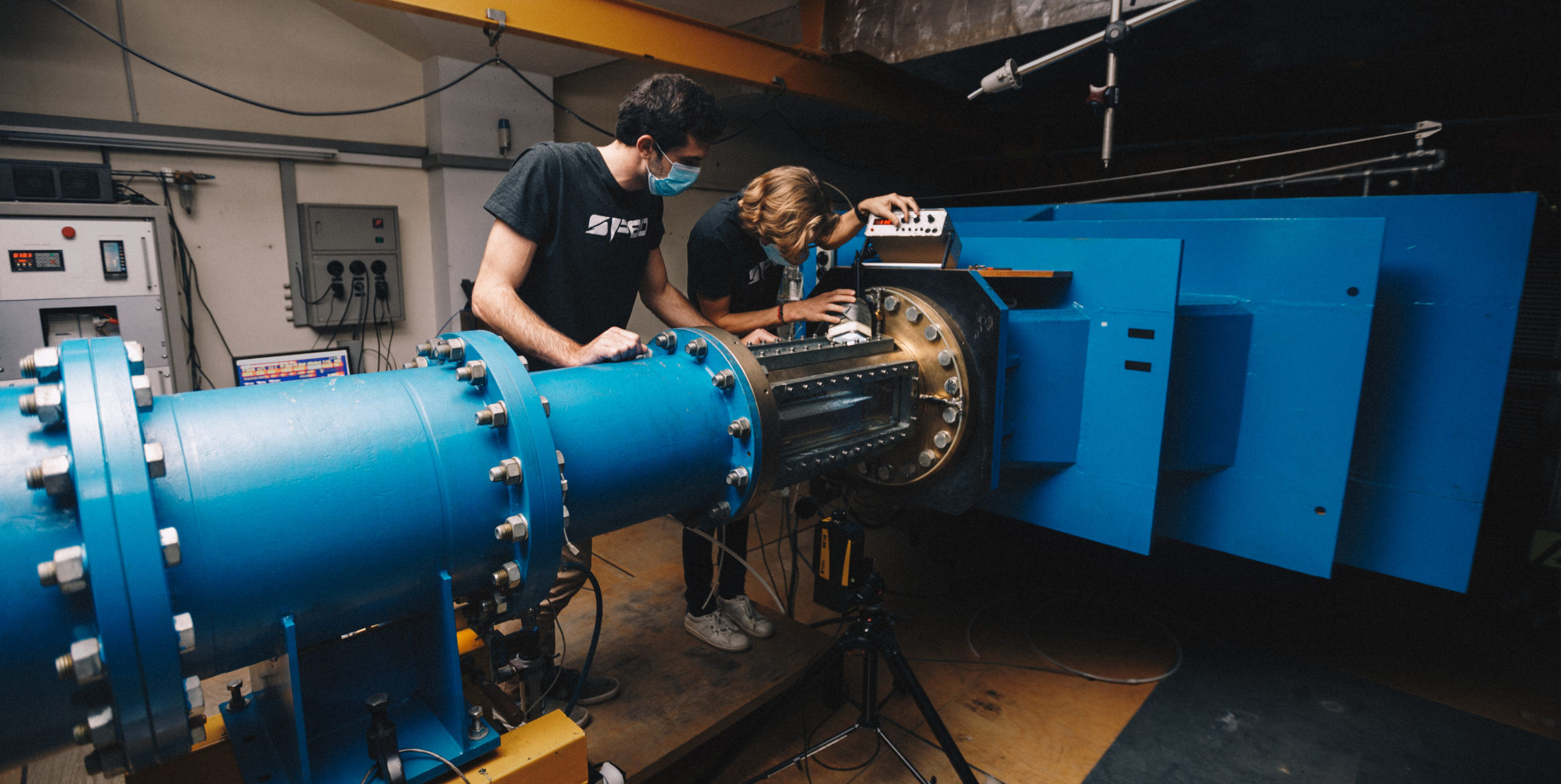Focus on foils and superventilation
December 6, 2021
Since the beginning of the SP80 adventure, optimization and research on superventilating hydrofoils are at the heart of the project and mobilize many resources. SP80 actually started when Xavier, Mayeul, and Benoit, our three co-founders, mounted superventilated fins on Benoit’s kiteboard and realized the tremendous potential of this new technology.
“I had a real feeling of stability at high speeds, says Benoit. We reached more than 40 knots without struggling to accelerate or stay on the board. We knew then that there was something to dig on that side.”
When the project was officially launched in October 2019, it was only natural to ask Prof. Mohamed Farhat from the Laboratory of Hydraulic Machines at EPFL, a renowned specialist in cavitation, for his expertise. His laboratory is equipped with a unique infrastructure: a cavitation tunnel capable of propelling water at over 50m/s (180km/h). It is in that tunnel that the foils of the legendary Hydroptère, the boat that made us all dream when we were kids, were optimized.
WHAT DO YOU KNOW ABOUT SUPERVENTILATION ?
First trials on superventilating fins were run in the tunnel in fall 2019 by Aurore Kerr as part of her master’s thesis at EPFL. Reproducing superventilation in the cavitation tunnel was not an easy task as Aurore explains:
“We were the first to work on superventilation in this tunnel. It involved a lot of challenges. We had to test a lot of things before finding the right solution.”
Thanks to this work the team was able to understand a lot about superventilation and the conditions under which it occurs (speed, angle of attack of the foil, shape of the profile, etc.) and to precisely measure the forces it implied on the foil. The obtained values confirmed those obtained through the numerical simulations developed by the team.

AND WHAT IS A CAVITATION TUNNEL?

A cavitation tunnel is an experimental facility used to test the behavior of submerged bodies in water (a hydrofoil for example). A powerful pump puts the water in motion in a closed loop circuit and the narrowing of the tunnel’s section at the test area accelerates the water thus recreating high speeds navigation conditions. Pressure in the tunnel is also precisely controlled to facilitate the apparition of cavitation or ventilation.
“On a topic with so many things to discover, the experimental approach appears necessary and complementary to numerical simulation. You cannot trust the simulations if you do not have the experimental data to compare them to” explains Charles de Sarnez, fluid dynamics team leader.
The only problem of Pr. Farhat’s cavitation tunnel is that the foil is enclosed in between 4 walls and it is impossible to model the water surface. It is an essential step in the understanding of superventilating hydrofoils because the interaction between the foil and the water surface is a very complex phenomenon that is difficult to reproduce in a numerical simulation. The team was able to count on the support of the METAS (the Swiss Federal Institute of Metrology) that granted us access to its 142m long towing tank.

Anaëlle Manon, master student in mechanical engineering at EPFL, monitored these tests helped by Flavio Noca, professor at HEPIA and EPFL. In one day at the Berne’s towing tank, the team could do more than 40 different runs, thus testing the same fins that Benoit had used on his kiteboard in 2018 and the foil that had been mounted on the prototype during the summer tests a few months before.
“These tests were very instructive and allowed us to put precise values on the feelings that Benoit had during his kite tests or when he was piloting the prototype”, says Anaëlle.
As a result of all these test campaigns, the SP80 hydrodynamics team has acquired a unique understanding of superventilation, a subject that has been little studied in the world until now.
This research has allowed us to develop in parallel very accurate numerical simulation models that allow us to test thousands of different designs in a few hours and thus to explore hydrofoil shapes that we would never have thought of.
These designs could well be found on our boat during our world record attempt to accelerate to 80 knots, stay tuned!

Copyright 2025 | SP80 | All Rights Reserved

